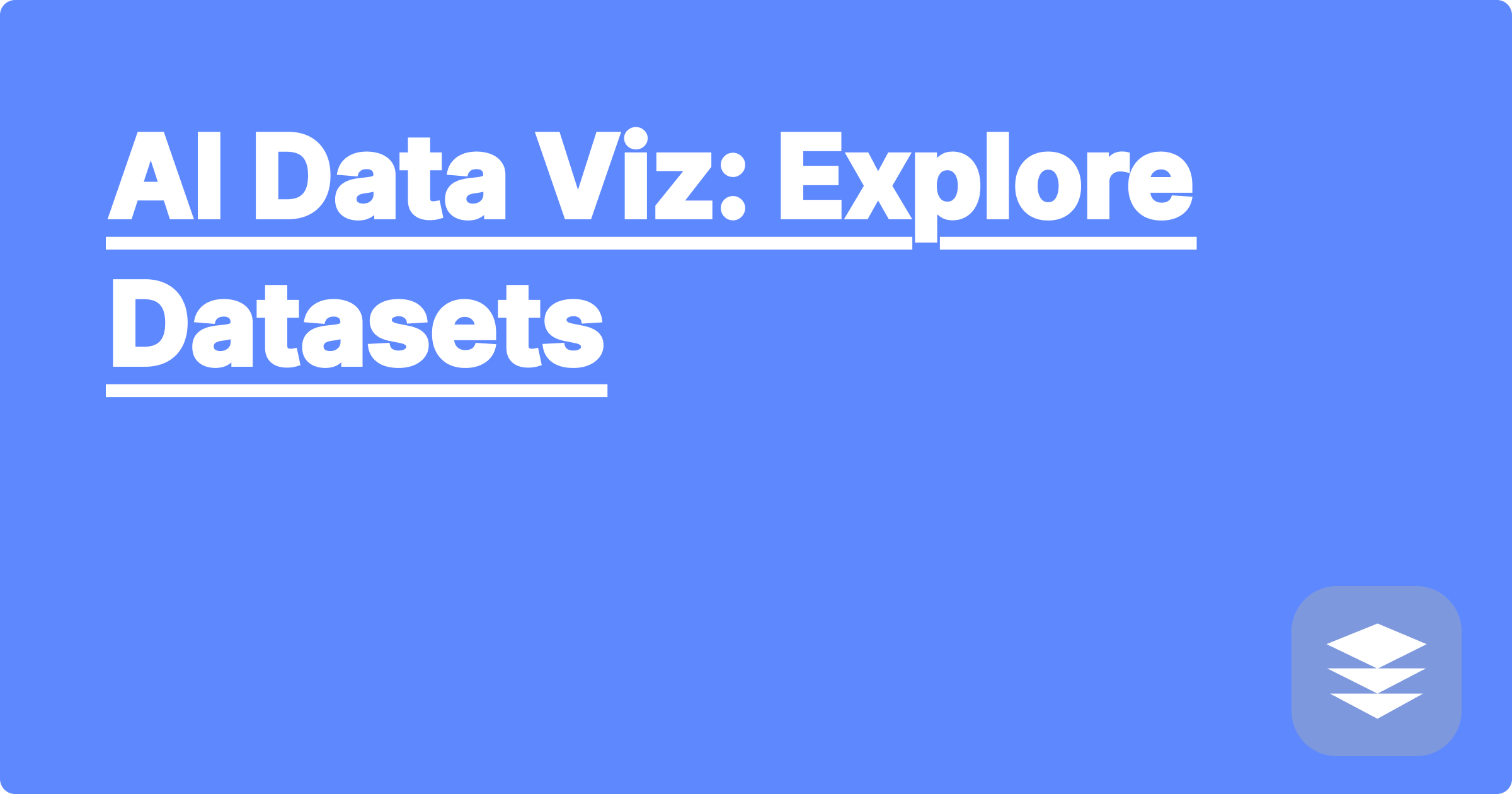
STEM fields are awash in data, a deluge that presents both immense opportunities and significant challenges. Extracting meaningful insights from complex datasets can be a daunting task, often requiring specialized programming skills and extensive time investment. Artificial intelligence offers a transformative solution, providing powerful tools to visualize and analyze data with unprecedented speed and efficiency. AI-powered data visualization can unlock hidden patterns, reveal correlations, and facilitate deeper understanding of complex phenomena, accelerating scientific discovery and innovation.
For STEM students and researchers, mastering AI-driven data visualization is no longer a luxury but a necessity. These skills are becoming increasingly crucial for effectively communicating research findings, collaborating across disciplines, and contributing to cutting-edge advancements. By leveraging the power of AI, researchers can streamline their workflows, focus on higher-level analysis, and ultimately make more impactful contributions to their respective fields. This blog post will explore how AI tools like ChatGPT, Claude, and Wolfram Alpha can be utilized to effectively visualize and explore datasets, empowering STEM professionals to harness the full potential of their data.
The sheer volume and complexity of data generated in modern STEM research pose a significant hurdle for analysis. Datasets often involve multiple variables, intricate relationships, and diverse formats, making traditional visualization methods cumbersome and inadequate. Manually creating charts and graphs can be time-consuming and prone to errors, especially when dealing with large or high-dimensional data. Furthermore, identifying meaningful patterns and extracting actionable insights from raw data requires advanced statistical knowledge and programming expertise, which can be a barrier for many researchers. This challenge is further compounded by the increasing need for interdisciplinary collaboration, where effective data communication and visualization are essential for sharing findings and fostering understanding across different fields.
AI offers a powerful and accessible solution to the challenges of data visualization. Tools like ChatGPT, Claude, and Wolfram Alpha can be leveraged to automate many of the tedious and complex tasks involved in data analysis. These AI assistants can be instructed to generate code for creating various types of visualizations, including scatter plots, histograms, heatmaps, and 3D plots. They can also assist in data cleaning, preprocessing, and transformation, preparing the data for effective visualization. Moreover, AI can be used to identify patterns and correlations within the data, providing valuable insights that might be missed through manual analysis. By integrating these AI tools into their workflows, STEM students and researchers can significantly enhance their ability to explore and understand complex datasets.
Begin by clearly defining the research question and identifying the relevant dataset. This initial step sets the foundation for the entire visualization process. Next, choose an appropriate AI tool based on the specific needs of the project. For example, ChatGPT and Claude excel at generating code and providing explanations, while Wolfram Alpha is particularly useful for complex calculations and data manipulation. Once the tool is selected, prepare the data for analysis. This may involve cleaning the data, handling missing values, and converting it into a suitable format for the chosen AI tool. Then, provide clear and concise instructions to the AI, specifying the desired type of visualization and any specific parameters or requirements. The AI will then generate the code or visualization directly. Finally, review and refine the output, ensuring that it accurately represents the data and effectively communicates the intended message.
Consider a researcher studying the relationship between temperature and plant growth. They have collected data on temperature, rainfall, and plant height over several months. Using ChatGPT, they can provide the data and request a scatter plot showing the correlation between temperature and plant height. ChatGPT can generate Python code using libraries like Matplotlib or Seaborn to create the visualization. The researcher can then customize the plot further, adding labels, titles, and trend lines to enhance its clarity. Another example involves analyzing gene expression data. A researcher can use Wolfram Alpha to perform statistical analysis on the data and then request a heatmap visualizing the expression levels of different genes under various conditions. Wolfram Alpha can generate the heatmap directly, highlighting patterns and clusters within the data. These examples demonstrate the versatility of AI tools in visualizing diverse types of data and addressing various research questions.
To effectively utilize AI for data visualization in academic settings, several strategies are recommended. First, develop a strong understanding of the underlying principles of data visualization and statistical analysis. This foundational knowledge will enable informed decision-making regarding the appropriate visualization techniques and interpretation of results. Second, experiment with different AI tools and platforms to identify the best fit for specific research needs and workflows. Familiarize yourself with the strengths and limitations of each tool to maximize their effectiveness. Third, practice formulating clear and precise instructions for AI assistants. The quality of the output is directly influenced by the clarity of the input. Finally, actively engage with the AI-generated visualizations, exploring different perspectives and refining the output to ensure accurate and impactful communication of research findings.
In conclusion, AI-powered data visualization offers a transformative approach to exploring and understanding complex datasets in STEM fields. By leveraging the capabilities of tools like ChatGPT, Claude, and Wolfram Alpha, researchers can streamline their workflows, uncover hidden patterns, and communicate their findings effectively. Embracing these powerful tools and incorporating them into academic practice will be essential for driving innovation and advancing scientific discovery in the years to come. Start exploring these AI tools today and unlock the full potential of your data.
AI Robotics: Simulation & Design
Chemistry AI: Study & Practice
Bio AI Solver: Biology Problems